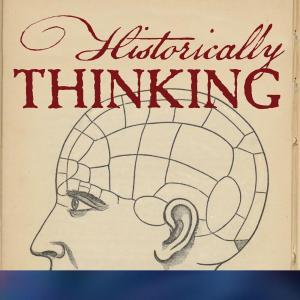Historically Thinking

Episode 297: Reign of Arrows
If the Parthian Empire is known at all, it’s by students of Roman history who see it pop up from time to time, before disappearing once again. Marcus Licinius Crassus, a member of the first triumvirate– consisting of himself, Pompey, and Julius Caesar– died in battle against the Parthians. At the moment of his assasination, Caesar was preparing for a campaign against Parthia; and Mark Anthony, of the second triumvirate, was defeated by the Parthians when he attempted to realize Caesar’s dream. The Emperor Trajan some 150 years later finally achieved victories against Parthia, making his way as far as the shore of the Persian Gulf. But who were the Parthians, on their own terms, not just as antagonists of the Romans? Where did they come from? How did they come to power? What was the extent of their Empire? And how were they integrated with the world around them, apart from their seemingly continual warfare with the ever-growing Roman Empire? With me to answer these questions is Nicholas Overtoom, Assistant Professor of History at Washington State University, and author of Reign of Arrows: The Rise of the Parthian Empire in the Hellenistic Middle East. For Further Investigation Think of this as the second in a series of conversations on the powers and principalities that occupied the territory of Iran. The first of these was with Lloyd Llewellyn-Jones, about the Achaemenid Persian Empire. Some time in the next six months we'll get to the Sassanids, who overthrew the Parthians. For more on the importance of nomads, see my conversation with Pamela Crossley in Episode 185; her book on the importance of nomadic thought and culture for all of Eurasia is Hammer and Anvil: Nomad Rulers at the Forge of the Modern World.






 Visit Podcast Website
Visit Podcast Website RSS Podcast Feed
RSS Podcast Feed Subscribe
Subscribe
 Add to MyCast
Add to MyCast